Labour Migration in Kenya
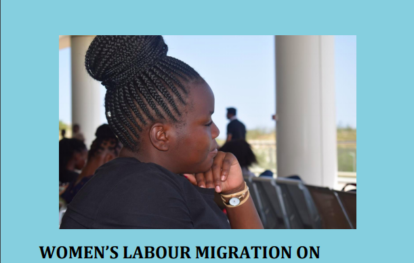
Report undertaken by GAATW and KUDHEIHA (authors now part of Send Us Home Kenya) to gain a better understanding of the labour migration processes and trends, and experiences of Kenyan women working as domestic workers in the Middle East.

Migrants working in the region often fall through the cracks of the regulatory system and are vulnerable to illegal and/or unethical treatment by agents and employers. In responding to reports of abuse from its nationals in the region, Kenya is faced with a dilemma: how to protect its diaspora while maintaining strong bilateral relationships that are crucial to its own economic interests.
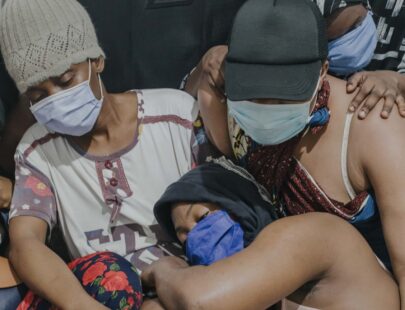
Due to the high demand for domestic labour in the GCC and other Middle Eastern states, a large number of East and West African migrant workers in the Middle East are women working as domestic workers. Report conducted by IDWF to understand recent trends, processes, challenges and opportunities around the migration of African women to the Middle East for domestic work.
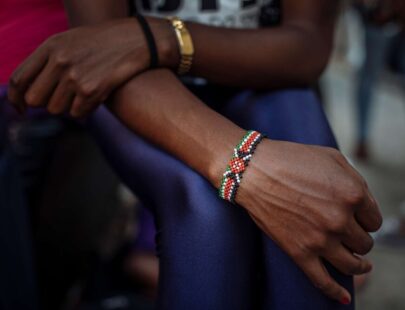
Following several media reports highlighting the mistreatment, injustice and oppression of Kenyan domestic workers in the Kingdom of Saudi Arabia, the
Commission on Administrative Justice (CAJ) conducted a systemic investigation to interrogate the shortfalls in the measures put in place by the Kenyan Government to protect Kenyan migrant workers
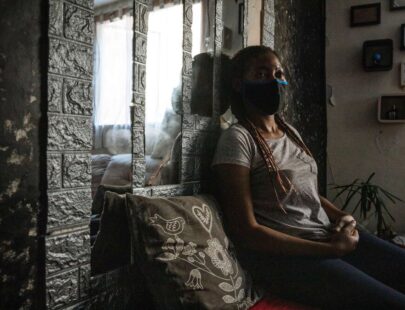
Following several media reports highlighting the mistreatment, injustice and oppression of Kenyan domestic workers in the Kingdom of Saudi Arabia, the
Commission on Administrative Justice (CAJ) conducted a systemic investigation to interrogate the shortfalls in the measures put in place by the Kenyan Government to protect Kenyan migrant workers.
Migrant workers' experiences in the Middle East
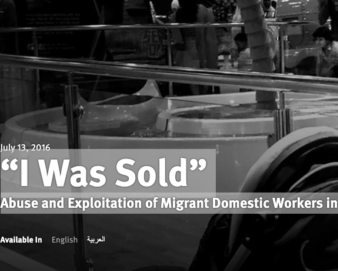
Many families in Oman, like other Gulf states, rely on migrant domestic workers to care for their children, cook their meals, and clean their homes. At least 130,000 female migrant domestic workers are employed in the country. Report looks at their experiences.

This documents how the UAE’s visa sponsorship system, known as kafala, and the lack of labor law protections leave migrant domestic workers exposed to abuse. Domestic workers cannot move to a new job before their contracts end without the employer’s consent, trapping many in abusive conditions.
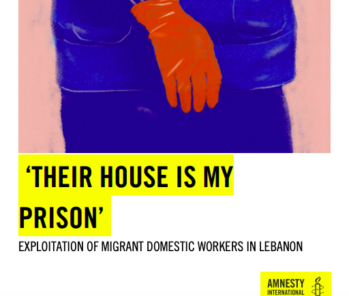
Migrant domestic workers in Lebanon are trapped in a web woven by the kafala system, an inherently abusive migration sponsorship system, which increases their risk of suffering labour exploitation, forced labour and trafficking and leaves them with little prospect of obtaining redress.
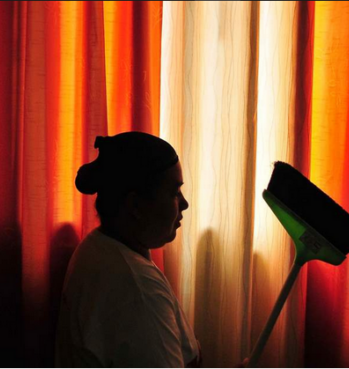
A 2020 report by Amnesty International reveals how migrant domestic workers employed in Qatar have been pushed to breaking point by extreme overwork, lack of rest, and abusive and degrading treatment. The organization spoke to 105 women who had been employed as live-in domestic workers in Qatar, and found that their rights were still being abused and violated despite government reforms aimed at improving their working conditions.

An examination of the variety of human rights abuses that foreign workers experience in Saudi Arabia in particular women migrant workers. Also presents an intimate workings of Saudi Arabia's criminal justice system.
Podcasts
Brown History Podcast: Kafala with Adib Chowdhury (2020)
Simply Youth Podcast: Maid in Hell featuring This is Lebanon (2021)
Politics of Disaster Podcast: Migrant Workers After The Blast (2021)
The Worldwide Tribe: Stories from the Refugee Crisis: The Kafala System: Why two migrant domestic workers die in Lebanon every single week (2021)
Beirut Buzz: On Kafala and Racism In Lebanon (2021)
Beirut Buzz: On Kafala and Racism In Lebanon pt. 2 (2022)
Legal instruments
Kenyan laws
Labour-Institutions-Act (Number 12 of 2007)
Labour-Institutions-Act (Supplement 45 of 2016)
(Stipulates regulations of private employment agencies responsible for recruiting migrant domestic workers including registration requirements)
National Employment Authority(Number 3 of 2016)
(established the national employment authority which overseas management of labour migration)
Kenya Employment Act (2007)
Immigration and Citizenship Act (Supplement 143 of 2020)
Counter-Trafficking in Persons Act (2010)
International instruments
Universal Declaration Of Human Rights (Ratified on July 31st 1990)
International Covenant On Economic, Social And Cultural Rights (Ratified on May 1st 1972)
International Convention On The Elimination Of All Forms Of Racial Discrimination (Ratified on September 13th 2001)
ILO instruments
Conventions on Migrant workers
Domestic Workers Convention, 2011 (No. 189)
Migration for Employment Convention, 1949 (No. 97)
Migration for Employment Recommendation 1949 (No. 86)
Migrant Workers Convention, 1975 (No. 143)
Migrant Workers Recommendation, 1975 (No. 151)
Fundamental conventions
C029 - Forced Labour Convention, 1930 (No. 29)
C087 - Freedom of Association and Protection of the Right to Organise Convention, 1948 (No. 87)
C098 - Right to Organise and Collective Bargaining Convention, 1949 (No. 98)
C100 - Equal Remuneration Convention, 1951 (No. 100)
C105 - Abolition of Forced Labour Convention, 1957 (No. 105)
C111 - Discrimination (Employment and Occupation) Convention, 1958 (No. 111)
C138 - Minimum Age Convention, 1973 (No. 138)
C182 - Worst Forms of Child Labour Convention, 1999 (No. 182)
Reports
IOM, Africa Migration Report: Challenging The Narrative (2020)
ILO, An assessment of labour migration and mobility governance in the IGAD region Country report for Kenya (2020)
International Labour Organisation, ‘Protecting Migrant Domestic Workers: The International
Legal Framework at a Glance’ (2016)
International Labour Organisation, ‘A Study of the Working and Living Conditions of MDWs in
Lebanon: “Intertwined: The Workers’ Side" (2016)
International Organisation for Migration, Guidelines for labour recruiters on ethical recruitment, decent work and access to remedy for migrant domestic workers (2020)
IOM, The biggest fish in the sea? Dynamic Kenyan Labour Migration in the East African Community (2013)
The Other Migrant Crisis, Protecting Migrant Workers against Exploitation in the Middle East and North Africa (2015)
UN Women, Laws, Policies and Regulations Governing Labour Migration in Asian and Arab States, a gender and rights perspective (2013)
KNOMAD, Understanding Women and Migration: A Literature Review (2016)
International Labor Organization (ILO), ILO Global Estimates on Migrant Workers (2015)
IOM, Continental Strategy for Africa 2020–2024 (2020)
IOM, Kenya Country Report 2021 - 2024 (2021)
ILO, A study of the Working and Living Conditions of MDWs in Lebanon (2016)
Antiracism Movement, Domestic Work in Lebanon Post-2019: Reflections on Emerging Trends (2022)
Academic sources
Abimourched R, ‘Migrant Domestic Workers in the Mashriq: Towards a Rights-Based Regulatory
Framework’, [2011] CARIM Research Reports 2011/03 1
Anderson B, ‘Mobilizing Migrants, Making Citizens: Migrant Domestic Workers as Political
Agents’ (2010) 33 Ethnic and Racial Studies 60
Hamill K, ‘Trafficking of Migrant Domestic Workers in Lebanon a Legal Analysis’ 60
Jureidini R, ‘Gender and Migration in Arab States: The Case of Domestic Workers’
https://www.academia.edu/85550/Gender_and_Migration_in_Arab_States_The_case_of_domestic_workers
Jureidini, Ray, “Women Migrant Domestic Workers in Lebanon,” International Migration Papers, 2002
https://www.academia.edu/3280038/Women_Migrant_Domestic_Workers_in_Lebanon
Kobaissi F, ‘Organizing the Unorganized: Migrant Domestic Workers in Lebanon.’ (2016) 34 Cairo Papers Social Science 1
Mansour-Ille D and Hendow M, ‘From Exclusion to Resistance: Migrant Domestic Workers and the Evolution of Agency in Lebanon’ (2018) 16 Journal of Immigrant & Refugee Studies 449
Pande A, ‘From “Balcony Talk” and “Practical Prayers” to Illegal Collectives: Migrant Domestic Workers and Meso-Level Resistances in Lebanon’ (2012) 26 Gender & Society 382
Pande A, ‘“The Paper That You Have in Your Hand Is My Freedom”: Migrant Domestic Work and the Sponsorship (Kafala) System in Lebanon’ (2013) 47 International Migration Review 414
Piper N, Gendering the Politics of Migration’ (2006) 40 The International Migration Review 133
Schuurman, Frans J., and Raouf Salib. “Labour Migration to the Middle East: A Review of Its Context, Effects and Prospects.” (1990) 18 Social Scientist 5
Articles
Cruz U, ‘Organizing for Our Rights: A Domestic Worker in the Middle East Speaks’ (2017)
Sagieh N, 'Domestic Workers in the Time of Coronavirus and All Other Crises' (2021)
Books
Anderson B, Doing the Dirty Work: The Global Politics of Domestic Labour , 2015
Ehrenreich B & Hochschild A, Global Women: Nannies, Maids, and Sex Workers in the New Economy, New York: Henry Holt, 2002
Chang G, Disposable Domestics: Immigrant Women Workers in the Global Economy, South End Press, 2000
Yeates N, Globalizing Care Economies and Migrant Workers: Explorations in Global Care Chains, Macmillan 2009
Siobhán M, Care, Migration and Human Rights, Routledge, 2015
Parreñas R, Servants of Globalisation: Women, Migration and Domestic Work, Stanford University Press, 2001
Fernandez B, De Regt M & Currie G, Migrant Domestic Workers in the Middle East: The Home and the World, London: Palgrave Macmillan, 2014.